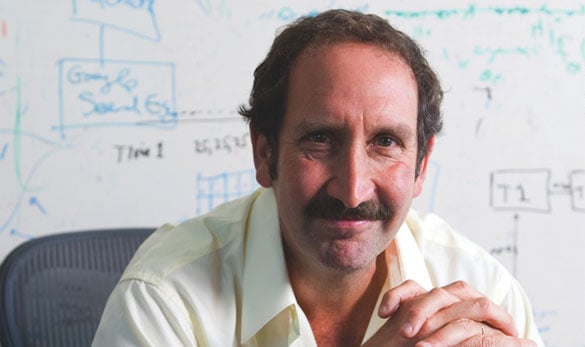Johns Hopkins Brain Trust

The human brain is the most complex machine in existence. Every brain is loaded with some 100 billion nerve cells, each connecting to thousands of others, giving around 100 trillion connections. Mapping those connections, or synapses, could enable scientists to decipher what causes neurological disease and mental illness. It’s an immense, daunting task.
The best way to tackle it? Use large amounts of data, says Michael Miller, the Herschel and Ruth Seder Professor in Biomedical Engineering and University Gilman Scholar. Miller and an interdisciplinary team of Johns Hopkins researchers are merging their neuroscience, computing, and data science expertise to unravel the brain’s mysteries and give other scientists tools to do the same. “We’re calling it data-intensive brain science,” he says.
In early 2016, the team launched the Kavli Neuroscience Discovery Institute at Johns Hopkins. Miller co-directs the institute with Richard Huganir, director of the Department of Neuroscience at the School of Medicine. They hope to make the KNDI a focal point of brain research, pulling together researchers from across Johns Hopkins institutions.
Johns Hopkins is well positioned to be a global leader in this area, hosting an April prequel to a New York-based meeting in September of 400 international researchers, ethicists, and government officials. Dubbed the United Nations of Brain Projects, researchers there called for an International Brain Station, modeled after the International Space Station, that would create a digital, cloud-based storehouse of neuroscience data accessible to researchers worldwide.
At Johns Hopkins, a trio of engineering researchers—Miller, Joshua T. Vogelstein, assistant professor of biomedical engineering, and Randal Burns, professor of computer science-is also submitting a grant to create a major U.S. Brain Hub under the domestic BRAIN Initiative launched by President Barack Obama in 2013. The hub would focus on digital, cloud-based data in an effort to support the international effort.
The JHU team is uniquely positioned to create such a hub. Miller, working with Susumu Mori, a professor of radiology at the School of Medicine, is already creating an immense cloud-based library of MRI brain scans taken from children with normal and abnormal brains. Computer software sorts and classifies the images. Doctors can search the library for images that match their patient’s most recent scan, helping them diagnose diseases and potentially treat them earlier. The researchers have been adding 3,000 brain scans a month to the databank, Miller says.
Meanwhile, Vogelstein has teamed with Burns to map the brain’s connections, which are collectively called the connectomes. Their Open Connectome Project site stores hundreds of terabytes of brain imaging data—mouse brains, in this case. The cloud-based data is free for scientists and laypeople around the world to access. They can view images, analyze them to identify neurons and synapses using special image-processing tools, and then help annotate them.
“People have charted the Earth from coarse to fine scale,” Miller says. “We’re developing neurocartography tools that allow you to chart the brain at different scales, in the same way as a road atlas.”
The team should have an answer about the domestic Brain Hub by early 2017.
– Prachi Patel
